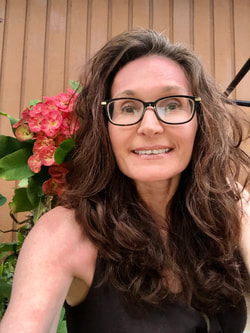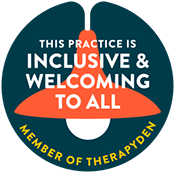|
Since April I have been doing a small class for therapists once a month introducing them to Emotionally Focused Therapy or EFT. I do not really consider myself a teacher but felt I wanted to be a part of spreading the good news about EFT. I love EFT and helping couples come together using it. I see couples go from distress and disconnection to peace and connection with each other. It is a joy to see this healing take place and I really wanted to show other therapists how to do this. It has been fun teaching others this therapy. So, what exactly is Emotionally Focused Therapy? Emotionally Focused Therapy for Couples is a three stage nine step process that takes a couple out of their negative repeating fights that are causing a couple distress, anguish and pain and into a new place of bonding and connection where the fights are resolvable and solutions can be found. It was created by Dr. Susan Johnson and based on research in attachment theory and emotion, as well as, on systems, humanistic, and experiential treatment models. As a model itself, it has been validated by research to help about 70% of couples achieve some long term gain. The therapist role is one of a process consultant. We show people how they process their emotions and help them go deeper and reprocess the deep meaning of their interactions creating new bonding events and helping them to heal past hurts.
Couples often come in having had a problem and negative interaction pattern for 5 to 7 years. This is a long time to have been experiencing distress and pain. In stage one of EFT, the therapist works with the couple to identify and break the negative cycle, pattern or what Dr. Johnson calls the dance that keeps them separated and in emotional distress. During this stage of therapy the therapist creates a safe environment, which helps the couple get more in touch with the underlying emotions, fears, and unmet relationship longings driving the negative dance. We show them how they process their emotions. For the couple, this experience of identifying these emotions and seeing the other experience them helps them to start to feel close again and want to share more. Things at home start to go along more smoothly. There is a sense of calm and hope. Finally, in this stage, as de-escalation begins to take root, the individuals in the couple pair begin to see, feel, and understand that together they have created this dance of distress. Each person begins to understand more deeply the affect of his or her behavior and the other. Couple learns to work together as a team to stop the cycle. Once the couple begins to understand the dance they do together and is able to step back and stop it or repair it when it gets going at home, they are ready for stage two of EFT. Stage two essentially involves bonding moments where the couple begins to learn how to communicate their vulnerabilities to each other in a new and non-reactive manner. They are supported by the therapist to take risks in expressing their core sense of self, in asking for the other to be there for them and in requesting understanding and acceptance. Partners take turns reaching out to each other in vulnerability and responding back with empathy creating a new sense of togetherness and secure attachment. Emotion is expanded and heightened during this stage. After the couple has finished the bonding and restructuring events of stage two, the will begin to feel more secure with each other. During stage three, they feel like a team again. The narrative of their relationship has shifted to one where the distress and conflict is understood, resolved, and just part of the story. Sure, people still fight and sometimes even go back into their cycle. This is normal and will happen especially during times of stress. However, they are able to pull themselves out of it and be there for each other because their sense of self and experience of the relationship has changed. Because of this new ability and sense and during stage three, the focus is more practical and mostly involves consolidating gains and problem solving.
8 Comments
5/31/2012 07:16:33 pm
You have mention wonderful thoughts and tips which is very good for health
Reply
7/24/2012 10:33:54 pm
Thanks for taking the time to discuss this. If possible, as you gain expertise, would you mind updating your blog with more information? It is extremely helpful for me.
Reply
Good post !!!Intimately, the post is in reality the greatest on this valuable topic. I agree with your conclusions and will thirstily look forward to your incoming updates. Just saying thanks will not just be enough, for the fantastic lucidity in your writing. I will instantly grab your rss feed to stay informed of any updates. Admirable work and much success in your business enterprise!
Reply
9/9/2012 03:48:22 pm
Thanks for the information. You provided food for thought. Thanks for sharing the information. All the best to you.
Reply
9/16/2012 10:18:12 pm
Hello there! I must tell you the blog post is really good. It is very informative. I want to mention one thing that I like the way you write the post to the point. I really appreciate and keep writing!
Reply
1/23/2014 06:03:08 pm
Thanks for sharing this great article! That is very interesting I love reading and I am always searching for informative information like this.
Reply
3/17/2015 10:22:47 pm
Great piece of writing, I really liked the way you highlighted some really important and significant points. Thanks so much, I appreciate your work.
Reply
6/19/2015 06:21:28 pm
Bloggers like you are very few on World Wide Web and I am happy to found you. It’s like finding a pearl in the sea, tough but fruitful. Best wishes and regards.
Reply
Your comment will be posted after it is approved.
Leave a Reply. |
Evelyn Schmechtig CochranCategories
All
Archives
February 2024
|

















